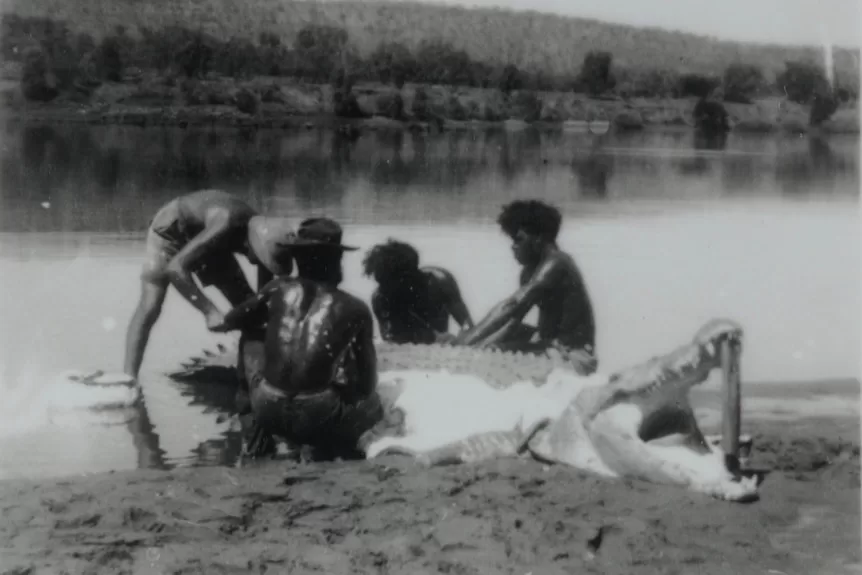The Northern Territory chief minister has flagged that she is uncomfortable with the number of saltwater crocodiles in the territory as her government releases a draft plan to manage crocodiles for the next 10 years.
Chief Minister Eva Lawler said the consultation paper for the government’s next saltwater crocodile management plan would “allow the public to have a say around crocodiles, including on culling … and what we need to do in the future to manage [crocodile] numbers”.
The Northern Territory’s saltwater crocodile population has risen to about 100,000 following a ban placed on crocodile hunting in 1971.
At that time, saltwater crocodiles had nearly been shot to extinction, with numbers estimated to have shrunk to only a few thousand.
Releasing the draft plan, Ms Lawler indicated she believed current crocodile numbers in the Northern Territory were of concern.
“Personally, I do [think the population balance isn’t right],” she said.
“I grew up in the territory and I remember swimming in lots of the billabongs and waterways in the territory and across the Top End.
“But there are experts in the field that will provide advice to government around how we manage crocodiles … but when those numbers are at 100,000, I think that’s at a level that we probably need to have a look at.”
Ms Lawler also said incidents such as last year’s attack at Wangi Falls in Litchfield, when a man was bitten by a 2-metre crocodile, also meant crocodile numbers needed scrutiny.
“When we start to see crocodiles in places like Wangi Falls … where it then impacts tourists, then we really need to make sure that we’re looking at those numbers,” she said.
Following that attack, then-chief minister Natasha Fyles said a “conversation need[ed] to be had” about reintroducing crocodile culling.
Public to have say on draft plan
The NT’s crocodile management program is a framework for how the government manages crocodile numbers in the territory, covering areas such as egg harvesting, trapping and advice around public use of waterways.
“I must say that we have done a really good job around the management of crocodiles so far … the government has managed this very carefully,” Ms Lawler said.
“This paper is about making sure we have a sustainable crocodile industry.
“The industry is worth about $25 million.
“But it is also about really looking at the density of those crocodile numbers, particularly in areas where there is large numbers of human beings.
“We do need to make sure our tourism industry is strong. [But] we don’t want to see Territorians taken by crocodiles.”
Environment Minister Kate Worden said the plan would “look to the future but also look to that very critical public safety space”.
“We have issues around public safety. Crocodiles are an apex predator,” she said.
“This draft plan is about going … to the public.
“And the Northern Territory has some of the best experts in this space.”
From 2005 to 2014, 15 people were killed in crocodile attacks in the Northern Territory.
Since 2014, there have been two fatal attacks, both in 2018.
The NT government said more than 3,000 crocodiles had been removed from the wild since 2012.
Crocodiles reducing feral animal numbers
Long-term Kakadu tour guide and Murumburr man Dennis Miller said culling was “not the answer” and that the current management approach was working.
“Crocodiles are part of our life in the Northern Territory,” he said.
“There should be more education, not culling … it would be a backwards step.
“The way forward is to do what we’re doing now.”
Mr Miller said any discussion about culling should involve extensive consultation with traditional owners and factor in environmental knock-on effects.
“[Crocodiles] keep our feral animals down, especially the pigs, that do a lot of damage to our ecosystem, our flood plains and rivers,” he said.
“Also they eat buffalo, so they eat all the feral animals, that we have had trouble to control because of a lack of funding.”
The government said it wanted to hear from landowners, business operators and the general public “on how we can go about croc management, including croc culling in a safe, sustainable way”.
